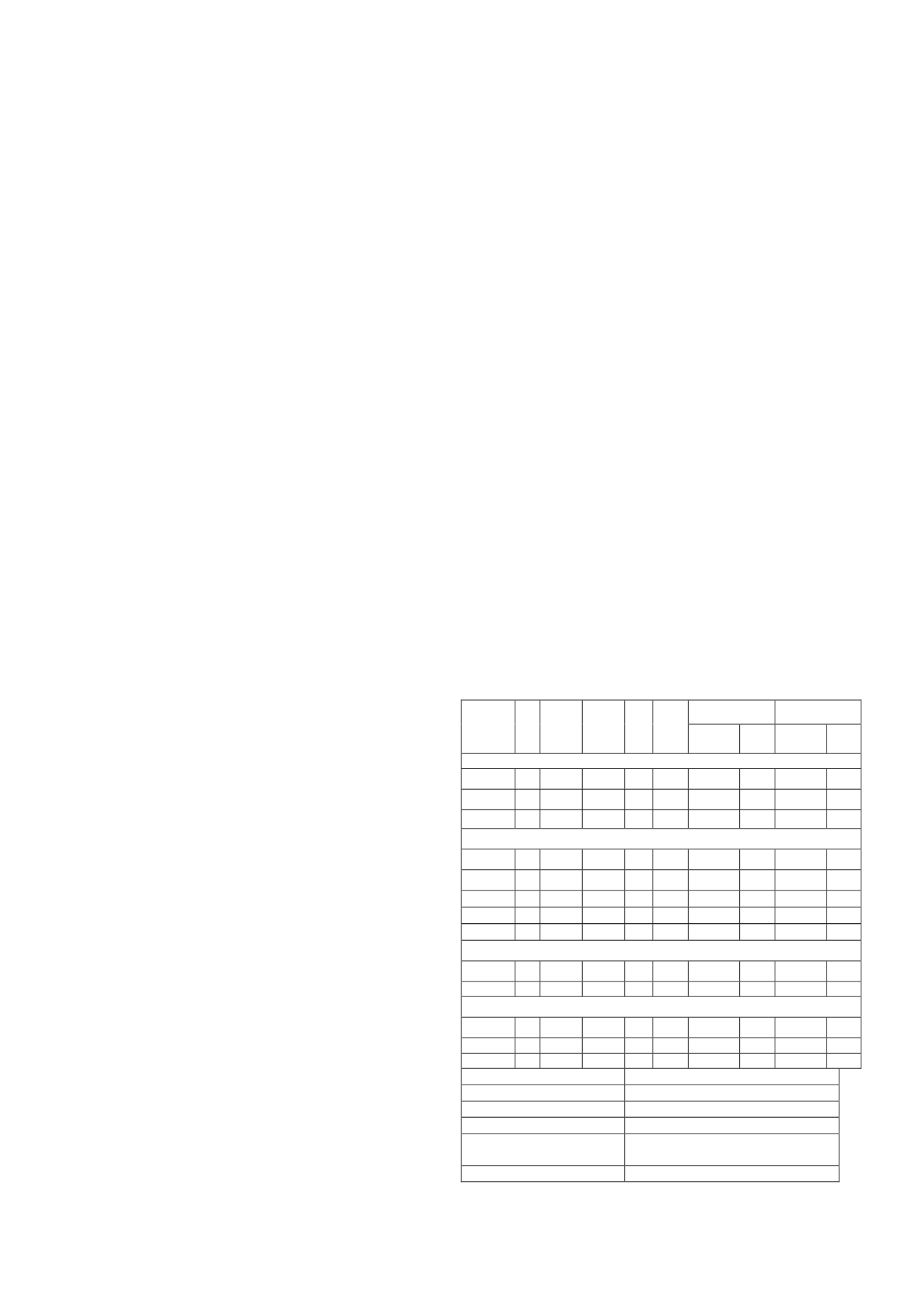
313
Proceedings of the 18
th
International Conference on Soil Mechanics and Geotechnical Engineering, Paris 2013
1
Shear Strength and Deformation Modulus of Tailing Sands under High Pressures.
Résistance au cisaillement et module de déformation de sables de rejets sous hautes pressions.
Campaña J., Bard E.
ARCADIS Chile
Verdugo R.
CMGI Chile
ABSTRACT: This article discusses the results obtained for 4 different tailing sands from copper mines located in Chile and Peru,
which were subjected to triaxial tests performed in drained and undrained conditions (CID and CIU), applying confining pressures up
to 3 MPa. The evolution of the deformation moduli, static and cyclic shear strength under drained and undrained paths for a wide
range of confining pressure, densities and fines content have been obtained. Also, the tests results have been interpreted, analyzed,
and compared with those reported for natural sands in the international literature, highlighting the differences in the mechanical
behavior resulting from the difference in genesis among these materials
.
RÉSUMÉ : Le comportement mécanique de 4 sables de rejets différents, provenant de mines de cuivre situées au Chili et au Pérou, a
été analysé à l’aide d’une série d’essais triaxiaux effectués en conditions drainées et non drainées (CID et CIU), en appliquant des
pressions de confinement jusqu’à 3 MPa. Les essais, pratiqués sur des échantillons avec différentes densités initiales et contenus de
particules fines, ont permis de suivre l’évolution du module de déformation et de la résistance au cisaillement statique et cyclique,
drainée et non drainée, pour une large gamme de pression de confinement. Ces résultats ont été interprétés, analysés et comparés à
ceux rapportés dans la littérature internationale pour des sables naturels, mettant en évidence les différences dans le comportement
mécanique résultant de la genèse différente de ces matériaux
.
KEYWORDS: tailing sands, high pressure, deformation modulus, copper tailing, triaxial, shear resistance.
1 INTRODUCTION.
Currently, both the important increase of production in the
copper mining industry and the decrease of available space for
the construction of tailing deposits have led to the design of
dam walls having unprecedented heights (above 250 m). This
situation requires that the geotechnical properties of the coarse
sands used for the dam construction be determined adequately
and rigorously. Also, the evolution of the deformation modulus
and shear strength due to changes in the compaction density and
in the fines content, among other characteristics, needs to be
assessed to feed the numerical modeling of these structures,
which is required to predict their behavior in the short and long
term as well as when faced with extreme seismic events. In the
technical literature, there is scarce information about the
evolution of non-drained shear strength as well as about the
cyclic shear stress and deformation modulus of tailing sands,
particularly under high confining pressures.
Results of tests performed on 4 types of cycloned copper
tailings sands, under high confining pressures, with a wide
range of confining pressures, densities, and fines contents are
presented. These tests include: grain size, index properties,
compaction, static triaxial (drained and undrained), cyclic
triaxial, small deformations and resonant column triaxial tests.
2 SANDS TESTED
The sands tested come from 4 copper mining processes (in
operation and projects). The “Arenas Tórtolas” (S1) come from
the Las Tórtolas Tailings Impoundment, from the Los Bronces
Mine (Anglo American Chile); of the remaining samples (S2 to
S4), two correspond to mines in Chile (2) and one in Peru (1).
The main mineral that makes up the sands tested is quartz (45%
to 60%), then sericite / sericite-muscovite (15% to 30%) and
other minerals (Campaña, 2011). The index properties of the
samples tested are summarized in Table 1. All the sands classify
as silty sands (SM), of low plasticity with a PI<7 (Plastic
Index).
Table 1. Index Properties of Tested Sands (Campaña, 2011)
MP
SP
USCS
Classif.
%
F
e
max
e
min
Cc Cu
MDD
(kN/m
3
)
w
opt
(%)
MDD
(kN/m
3
)
w
opt
(%)
Sand S1 - Las Tórtolas (Gs=2.73)
SM
15 1.100 0.460 1.4 3.3
16.78 14.0 15.89 18.0
SM
18 1.068 0.444 1.5 3.6
16.97 14.0 16.38 16.0
SM
21 1.084 0.414 1.0 4.0
17.36 12.5 16.38 16.0
Sand S2 (Gs=2.67-2.75. Gs average=2.72)
SM
15 1.310 0.647 1.2 1.7
16.68 10.0 15.30 14.0
SM
(§)
15 1.068 0.517
-
-
17.07 12.8
-
-
SM
(§)
18 0.992 0.537
-
-
16.88 13.8
-
-
SM
21 1.331 0.571 1.2 1.8
16.87 11.0 15.99 18.0
SM
Sand S3 (Gs=2.70)
SM
12 0.942 0.525 1.2 4.2
17.46 13.5 16.48 15.5
SM
18 0.956 0.484 3.1 12.9 18.25 11.0 16.77 14.5
Sand S4 (Gs=2.69)
SM
24 0.915 0.406 2.7 165
18.84
8.0
17.36
8.5
SM
20 1.280 0.601 1.2 4.2
16.48 15.0 15.40 18.0
SM
30 1.280 0.592 3.1 12.9 17.85 11.5 16.87 14.0
% F: particles <0,074 mm
MDD: Maximum Dry Density
Gs: Specific gravity
MP: Modified Proctor Test
e
max
: Maximum void ratio
SP: Standar Proctor Test
e
min
: Minimum void ratio
w
opt
: Optimum water content
Cu:
Coefficient
of
uniformity
(§) Tested at low pressures,
’
3
<0.8MPa
Cc: Coefficient of curvature
USCS: Unified Soil Classif. System


